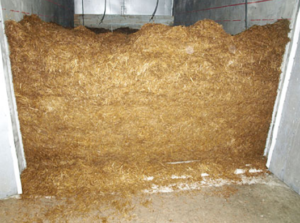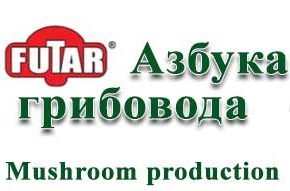The choice of substrates and raw materials
ABOUT SUBSTRATES
On the Internet there is a lot of information about various materials, which can be used for the production of oyster mushroom substrate. You can find tables on nitrogen content (or protein content) as well as on other basic elements – potassium, carbon, phosphorus.
But then the question arises: what can this information give a cultivator? Almost nothing except some common knowledge.
Nitrogen rate is an important factor, oyster mushroom yields depend on it.
Also it is desirable to maintain it in the substrate at not less than 0.7-0.8 Kjeldahl units. However, it should be considered that all table figures are approximate (and in some sources they do not match reality at all) and it is impossible to determine nitrogen content using them without a proper lab analysis!
If:
– the raw material is poor in phosphorus content, this particuliar element (not nitrogen), is a limiting factor for oyster mushroom yield.
– nitrogen content in your raw materials will be above one, then the substrate will begin to rot due to the process of bacterial decomposition.
– your mycelium is weak or reinoculated, the yield will be low regardless of the substrate composition.
In general, you should know a few key principles, rather than table numbers:

– straw contains less nitrogen than hay.
But the parameters of both straw and hay vary in wide range.
For straw, they vary from 0.2 to 0.8.
For hay:
It largely depends on the composition, plant development phase, time of mowing and weather conditions during mowing.
The meadow hay contains from 0.5 to 1.5 nitrogen
In legume hay the similar indicators are much higher – from 1.8 to 4.2.
Even in alfalfa straw (it is sold by farms that grow alfalfa not for forage, but for seeds), nitrogen content is higher than that in cereal straw, usually by about 1.3 +/- 0.3. But this straw contains rigid stems and requires careful flattening or crushing.
– The nitrogen content depends on growing the conditions and weather a few weeks before mowing (this is true for cereals, legumes and sunflowers). To guess a nitrogen content by the appearance of the raw material, is practically impossible. As a rule, bright yellow or wheat-colored straw with a waxy coating contains less nitrogen because excessive accumulation of wax indicates a reaction to drought. In dry growth conditions cereal straw can have nitrogen content up to 0,25-0,3, and it is generally very low. When using such a straw, you need to add hay to the misture. How to determine how many plant supplements are needed?
The most reliable method is the Kjeldahl analysis. How to calculate the amount of raw materials and additives, knowing the results of the analysis, is described here.
If it is not possible to analyze material, you can conduct an experiment. We will describe it in the second part of the article.
In the years when it rains two or three weeks before cereals harvest, there is an outflow of nutrients from the grain to the straw. This lowers the wheat grain class, but improves the quality of the straw. Any cereal straw in such year may contain 0.6-0.7 nitrogen and requires minimal amounts of additives.
– Sunflower husks.
It is believed that the nitrogen content ranges from 0.6 to 0.8 in this material. In most cases, it is true. But in recent years, there are frequent complaints about the low mushroom yields on pure husk without additives. In such cases the analysis shows nitrogen content of this raw material is only 0.4 to 05.
– Bran although it is a good nutritional supplement,it should be used with caution. It can easily cause the development of Trichoderma as bran is usually added along with the mycelium on the inoculation table, without prior heat treatment. Perhaps calcining the bran can reduce the spoilage. In any case, do not add them to the whole batch of substrate blocks, but experiment with a dozen of bags first.
– Cotton cotton waste has a very balanced nutritional composition, a large amount of nitrogen and it enables oyster mushrooms to have high yields – up to 40% in two flushes.
The complexity of working with cotton waste is that in addition to oyster mycelium this raw material is also a great substrate for molds.
– when designing substrate compositions you must take into account the type of heat treatment for your raw materials.
– Wood sawdust – have a very low nitrogen content – 0.1-0.3. They are suitable only as additives in sterile growing technology.
– In order to decide which raw material is best for your environment, you need to gain some experience in heat treatment. Regardless of the chosen technology it is better to start with one / two component mixtures. You need to reach stable indicators:
– treatment temperature and timeing,
– humidity and substrate pH,
– substrate density (on which the bag weight depends).
And only then you can start creating substrate compositions.
You can read about it in our next article.
